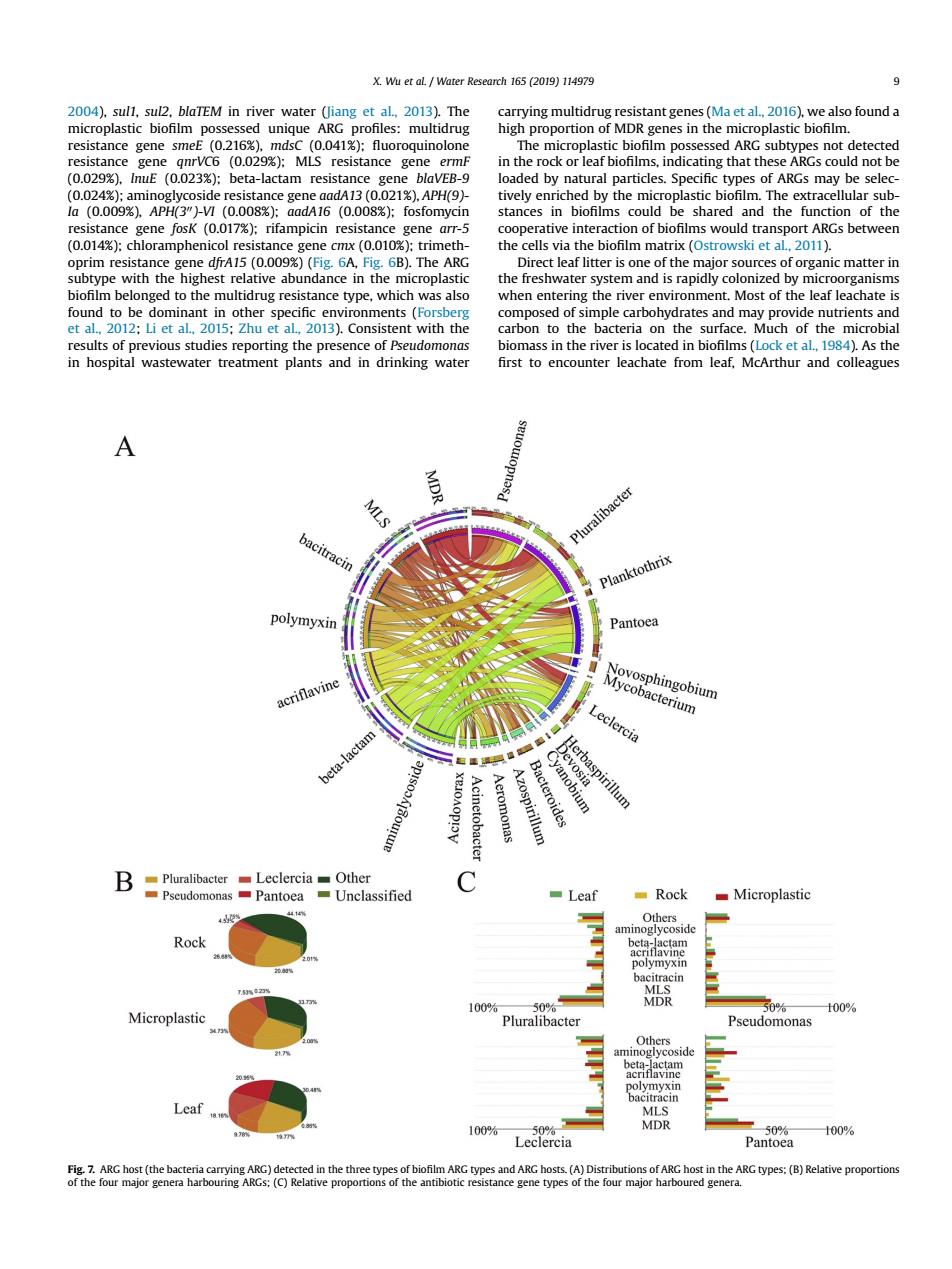正在加载图片...

X Wu et al.Warer Research 165 (2019)114979 also found a 鲜 n th kor le 0.00 (0.014ch abtype with the highest ve abundance in the found to be in oth ments ide nutrients and n hospital wastewater treatment and in drinking wat ■Lcaf ■Rock Microplastic Microplasti a Leaf 100%2004), sul1, sul2, blaTEM in river water (Jiang et al., 2013). The microplastic biofilm possessed unique ARG profiles: multidrug resistance gene smeE (0.216%), mdsC (0.041%); fluoroquinolone resistance gene qnrVC6 (0.029%); MLS resistance gene ermF (0.029%), lnuE (0.023%); beta-lactam resistance gene blaVEB-9 (0.024%); aminoglycoside resistance gene aadA13 (0.021%), APH(9)- Ia (0.009%), APH(300)-VI (0.008%); aadA16 (0.008%); fosfomycin resistance gene fosK (0.017%); rifampicin resistance gene arr-5 (0.014%); chloramphenicol resistance gene cmx (0.010%); trimethoprim resistance gene dfrA15 (0.009%) (Fig. 6A, Fig. 6B). The ARG subtype with the highest relative abundance in the microplastic biofilm belonged to the multidrug resistance type, which was also found to be dominant in other specific environments (Forsberg et al., 2012; Li et al., 2015; Zhu et al., 2013). Consistent with the results of previous studies reporting the presence of Pseudomonas in hospital wastewater treatment plants and in drinking water carrying multidrug resistant genes (Ma et al., 2016), we also found a high proportion of MDR genes in the microplastic biofilm. The microplastic biofilm possessed ARG subtypes not detected in the rock or leaf biofilms, indicating that these ARGs could not be loaded by natural particles. Specific types of ARGs may be selectively enriched by the microplastic biofilm. The extracellular substances in biofilms could be shared and the function of the cooperative interaction of biofilms would transport ARGs between the cells via the biofilm matrix (Ostrowski et al., 2011). Direct leaf litter is one of the major sources of organic matter in the freshwater system and is rapidly colonized by microorganisms when entering the river environment. Most of the leaf leachate is composed of simple carbohydrates and may provide nutrients and carbon to the bacteria on the surface. Much of the microbial biomass in the river is located in biofilms (Lock et al., 1984). As the first to encounter leachate from leaf, McArthur and colleagues Fig. 7. ARG host (the bacteria carrying ARG) detected in the three types of biofilm ARG types and ARG hosts. (A) Distributions of ARG host in the ARG types; (B) Relative proportions of the four major genera harbouring ARGs; (C) Relative proportions of the antibiotic resistance gene types of the four major harboured genera. X. Wu et al. / Water Research 165 (2019) 114979 9